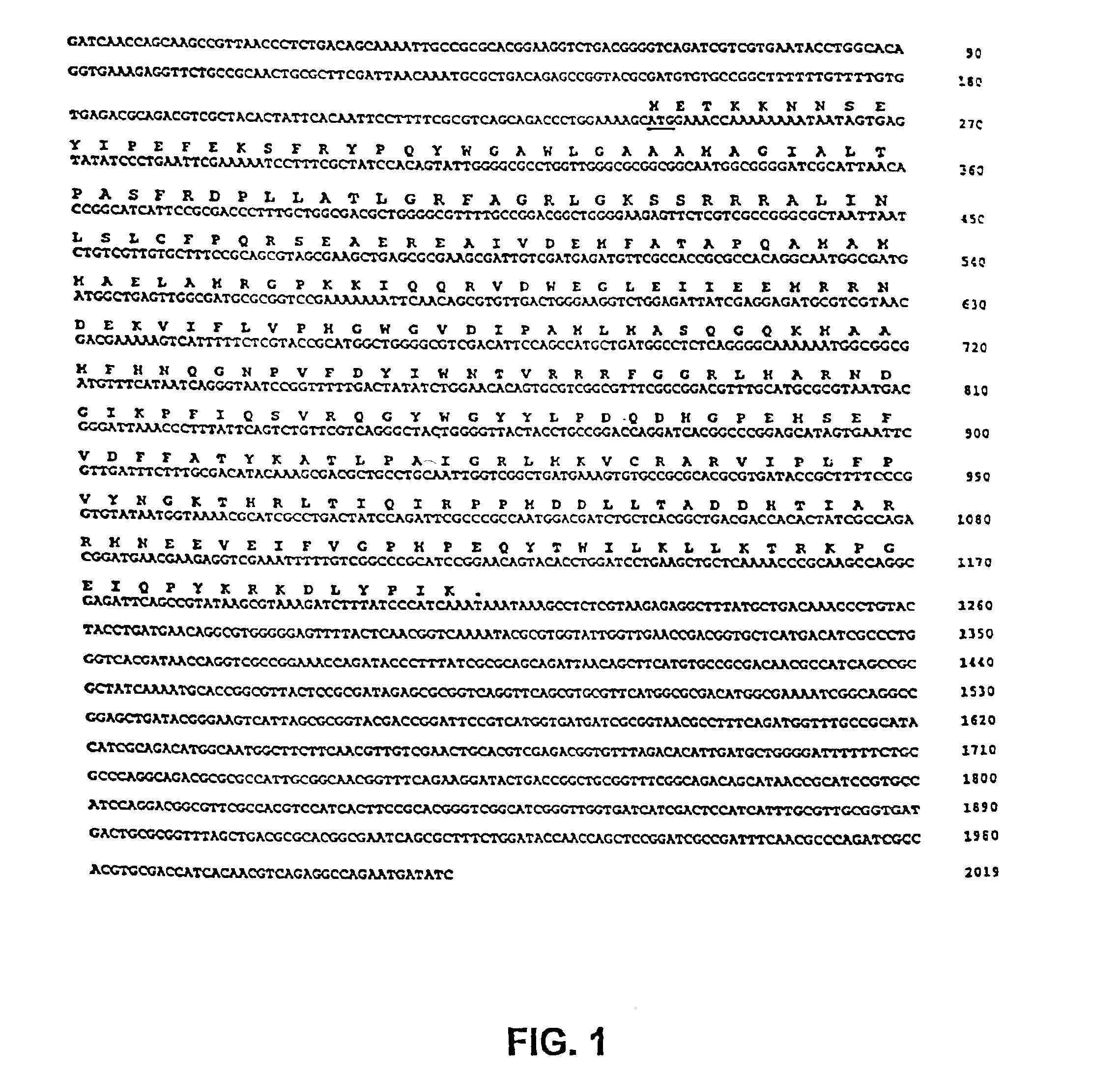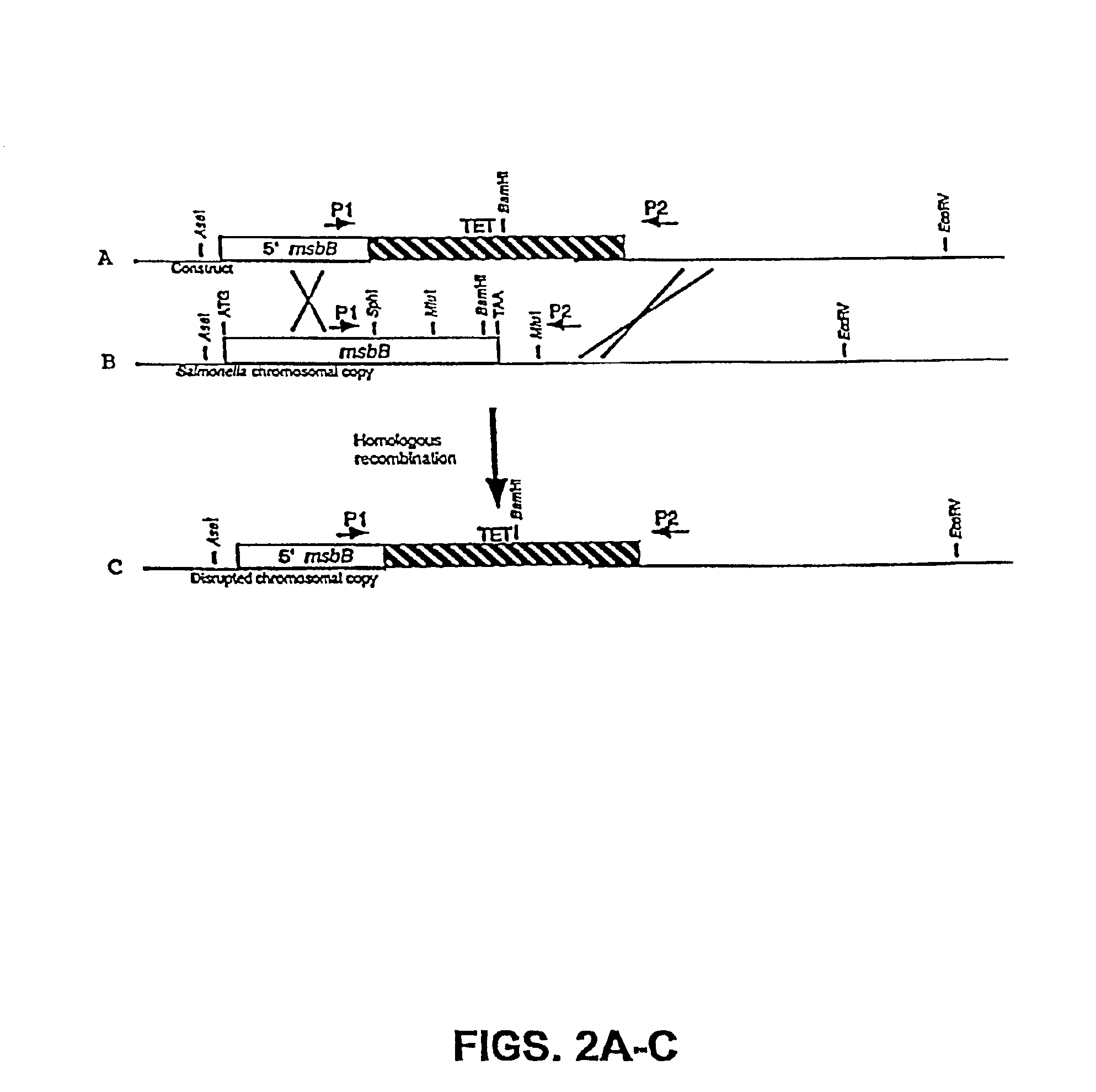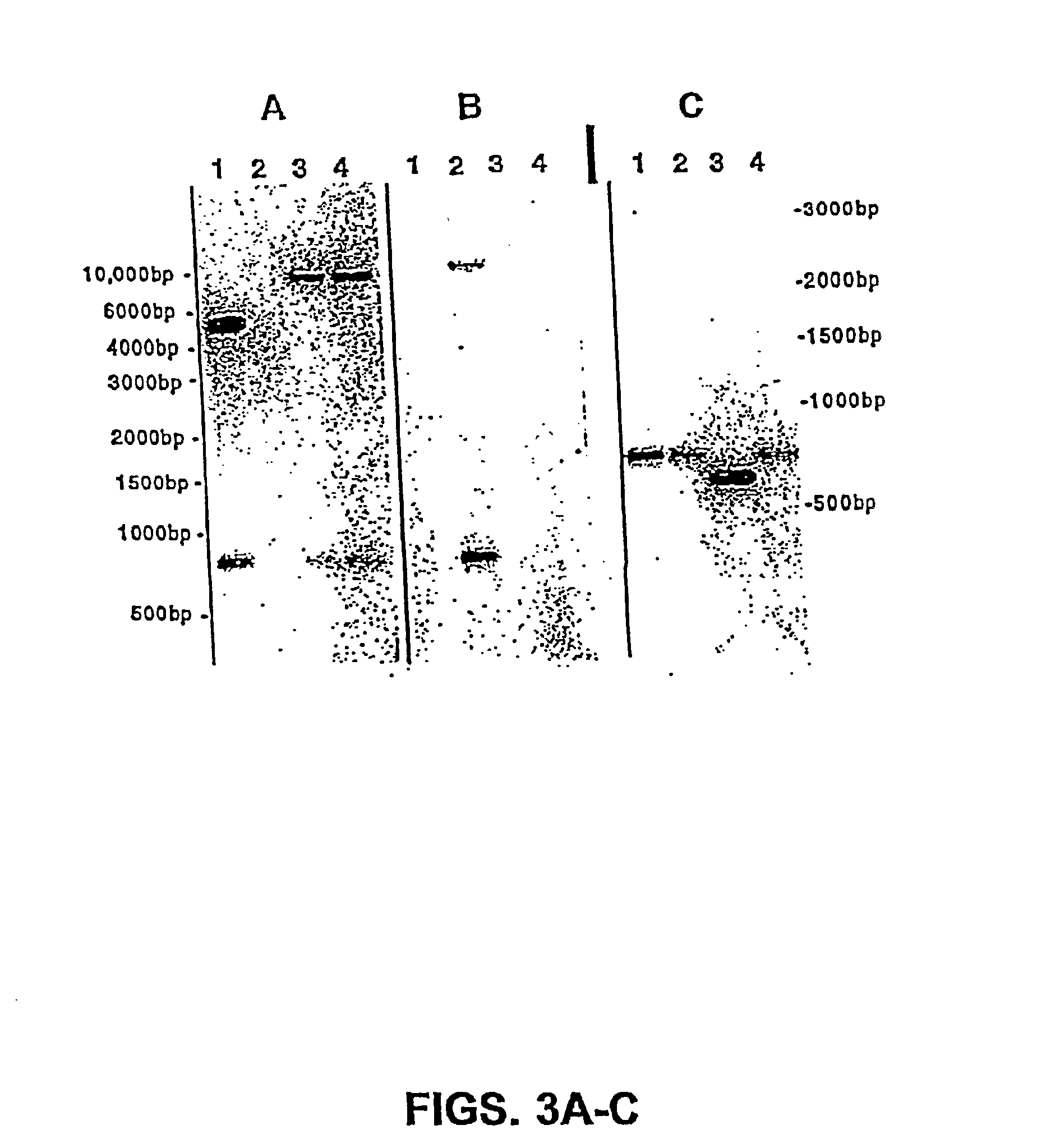Genetically modified tumor-targeted bacteria with reduced virulence
a tumor-targeted, bacteria-based technology, applied in the direction of enzymology, peptides, drug compositions, etc., can solve the problems of toxic consequences for the host, wide-spread infection in the cancer patient, and the inability to directly kill bacteria, so as to improve the safety of tumor-targeted bacteria, reduce the ability to kill, and improve the effect of therapeutic efficacy
- Summary
- Abstract
- Description
- Claims
- Application Information
AI Technical Summary
Benefits of technology
Problems solved by technology
Method used
Image
Examples
Embodiment Construction
6.1 ISOLATION / IDENTIFICATION OF A GENE INVOLVED IN VIRULENCE
6.1.1 GENETIC ALTERATION OF SALMONELLA msbB
6.1.2 CHARACTERISTICS OF SALMONELLA HAVING DISRUPTED msbB
6.2 USE OF SALMONELLA WITH DISRUPTED msbB FOR TUMOR TARGETING AND IN VIVO TREATMENT OF SOLID TUMORS
7. EXAMPLE: LOSS OF VIRULENCE, REDUCED TNF.alpha. STIMULATION, AND INCREASED CHELATING GENT SENSITIVITY, BY DISRUPTION OF THE SALMONELLA msbB
7.1 ISOLATION AND COMPOSITION OF SALMONELLA msbB GENE
7.2 GENETIC ALTERATION OF SALMONELLA msbB
7.2.1 AN IMPROVED METHOD FOR SELECTING rosbB GENETIC ALTERATIONS BY PRE-SELECTION WITH SUCROSE
7.3 DISRUPTION OF SALMONELLA msbB REDUCES TNF.alpha. INDUCTION
7.3.1 TNF.alpha. INDUCTION IN MICE
7.3.2 TNF.alpha. INDUCTION IN PIGS
7.3.3 SALMONELLA LPS-INDUCED RESPIRATION IN PIGS
7.3.4 TNF.alpha. INDUCTION IN HUMAN MONOCYTES
7.3.5 msbB.sup.- SALMONELLA LPS TNF.alpha. INDUCTION IN HUMAN MONOCYTES
7.4 DISRUPTION OF SALMONELLA msbB REDUCES VIRULENCE
7.4.1 IN MICE
7.4.2 IN PIGS
7.5 TUMOR TARGETING OF msbB.sup.- CLON...
PUM
| Property | Measurement | Unit |
|---|---|---|
| pH | aaaaa | aaaaa |
| volume | aaaaa | aaaaa |
| concentrations | aaaaa | aaaaa |
Abstract
Description
Claims
Application Information
 Login to View More
Login to View More - R&D
- Intellectual Property
- Life Sciences
- Materials
- Tech Scout
- Unparalleled Data Quality
- Higher Quality Content
- 60% Fewer Hallucinations
Browse by: Latest US Patents, China's latest patents, Technical Efficacy Thesaurus, Application Domain, Technology Topic, Popular Technical Reports.
© 2025 PatSnap. All rights reserved.Legal|Privacy policy|Modern Slavery Act Transparency Statement|Sitemap|About US| Contact US: help@patsnap.com



